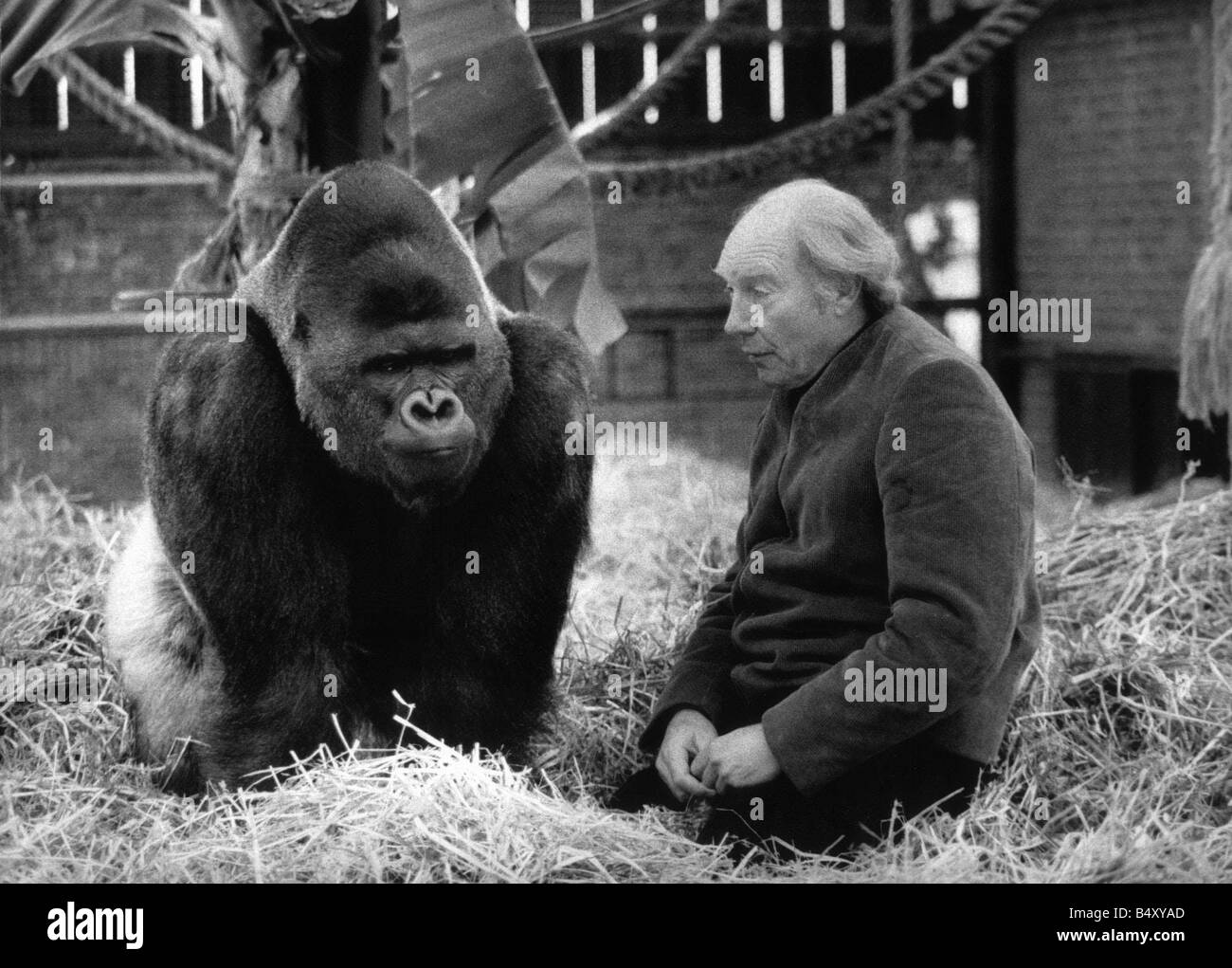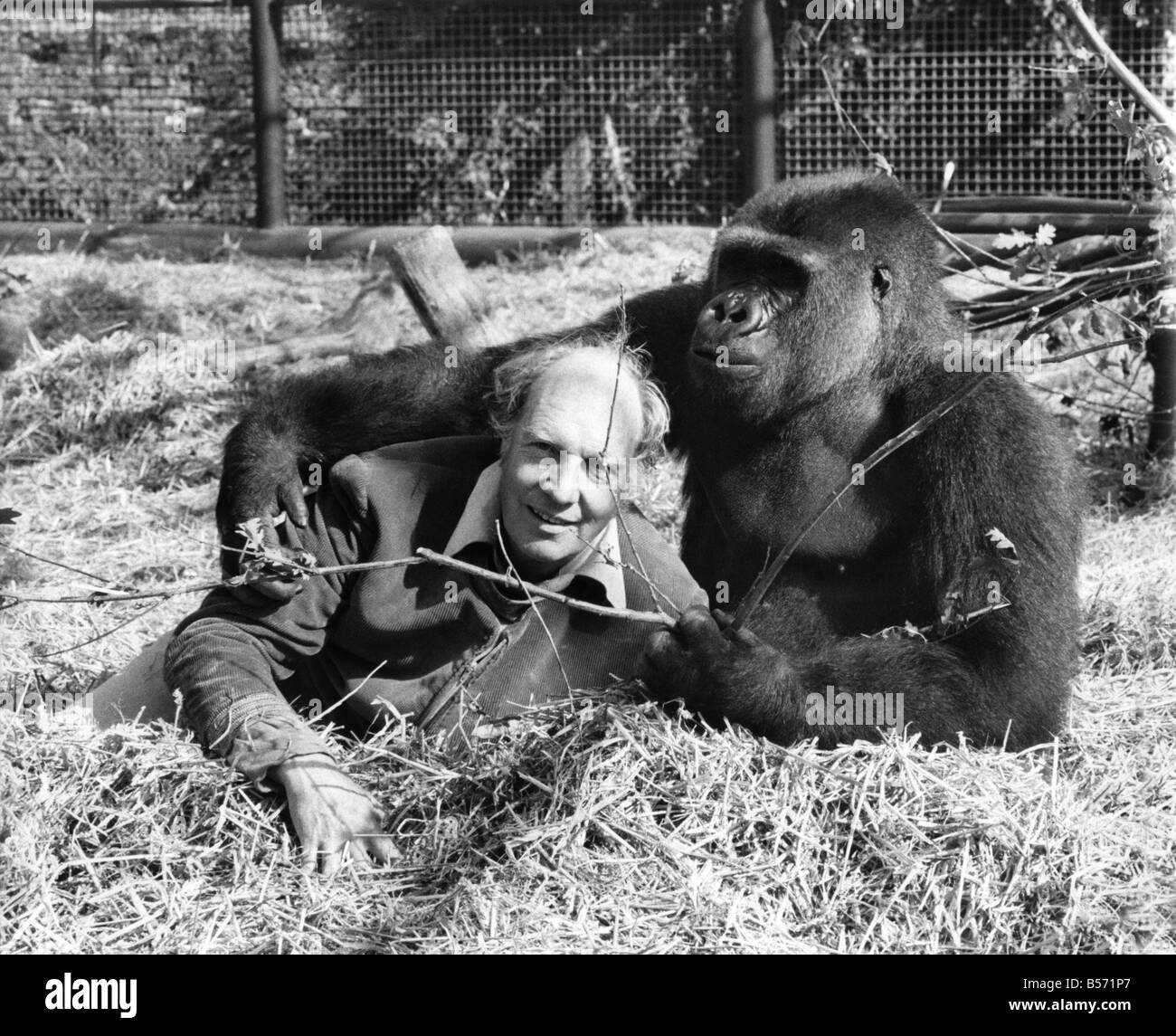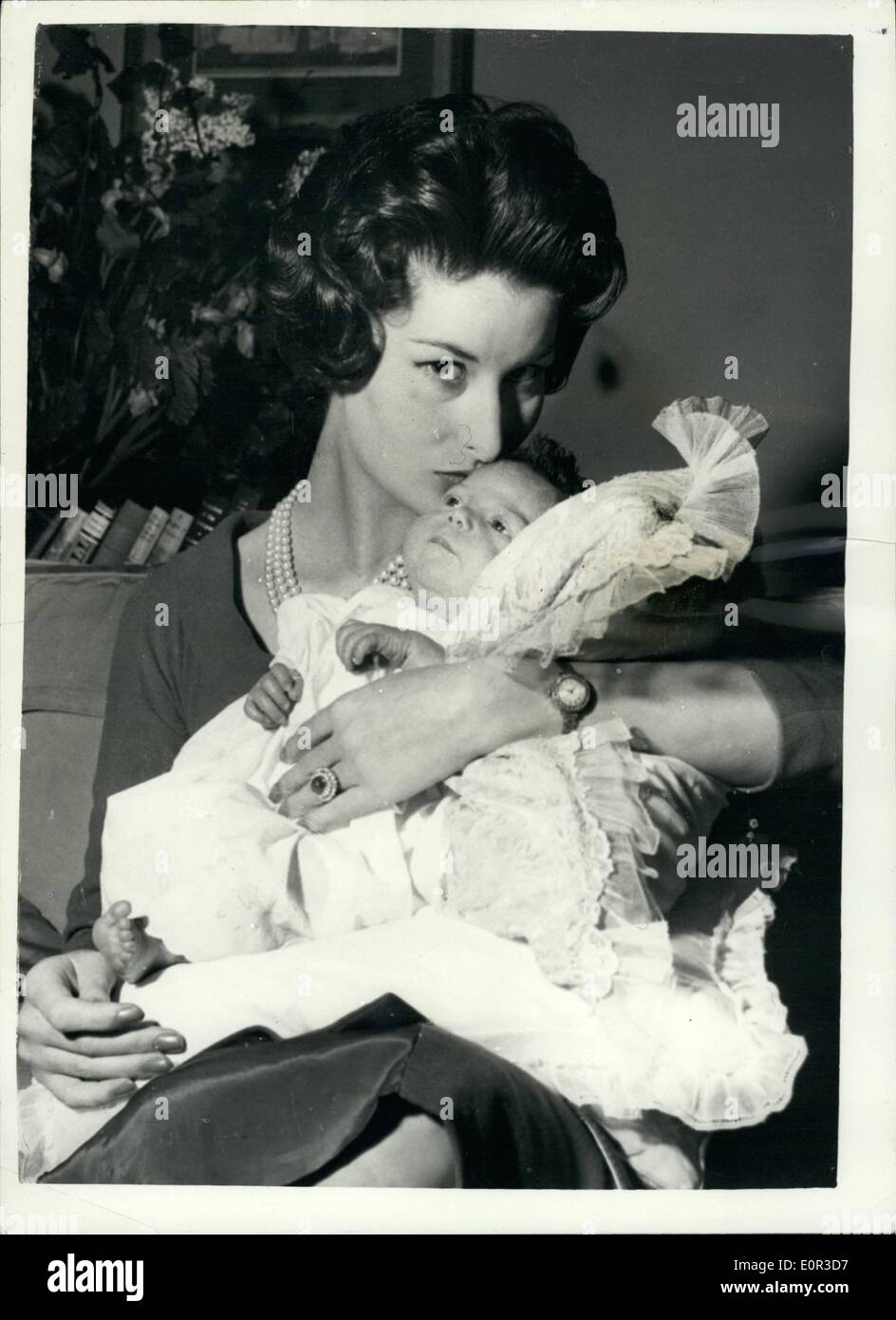Jane Hastings John Aspinall
John Aspinall, also known as Aspers (11 June 1926 – 29 June 2000) was a British zoo owner and gaming club host. From middle class beginnings he used gambling to move upwardly to the highest echelons of English society in the 1960s. Biografi John Aspinall MM Biografi - John Aspinall ialah tokoh populer di pasar judi. Dalam satu waktu dalam kehidupannya, ia ialah seseorang bandar yang sukses dan dikelilingi oleh pro-kontra dengan hukum.
He insisted on treating them not as beasts to be exhibited, but as friends to be pampered. He ensured that they should have adequate space to live in the same kind of groupings as in the wild, and took the greatest trouble to reproduce the variety of their natural diet. His gorillas, for example, were given all kinds of berries, and treats such as roast meat on Sundays and chocolate bars.John Aspinall was born in month 1883, at birth place, to Edwin Aspinall and Jane Aspinall (born Greenhalgh). Edwin was born circa 1859, in 16 Far Lane Gorton Manchester, England UK. Jane was born in June 1860, in Openshaw, Lancashire, England. John had 3 brothers: Frank Randolph Aspinall and 2 other siblings. Jul 01, 2000 In 1956 Mr. Aspinall married Jane Hastings, a Scottish model, and moved into an Eaton Place apartment, where he built a garden shed housing a Capuchin monkey, a 9-week-old tigress and two Himalayan. Nov 14, 2018 John Aspinall married first, in 1956 (dissolved 1966), Jane Hastings, a Scottish model; they had a son and a daughter. He married secondly, in 1966 (dissolved 1972), Belinda 'Min' Musker, a grand-daughter of the 2nd Viscount Daventry; they had a daughter who died in infancy.
'Aspers' himself, determined to annihilate the gulf between the species, delighted to romp with tigers and gorillas. His keepers, usually chosen without reference to qualifications, were encouraged to behave in a similar manner. In his book The Best of Friends (1976), Aspinall insisted on the individuality of animals: 'There are bold tigers and timid ones, honest tigers and treacherous ones, predictable and unpredictable, noisy and silent, hot-tempered and good-natured.'
He himself was an excellent judge of his charges. A Passion to Protect, a film about his work, showed him having his eyelids delicately picked by the gorilla Djoun; receiving newly-born tiger cubs dumped in his lap by the mother; and being surrounded by an affectionate wolf pack. Of his 30 best friends, he once remarked, more than half were animals. In 1993 he was perfectly happy that his grand-daughter should play with gorillas; indeed, he remarked, 'I'd rather leave them with gorillas than with a social worker.'

While experts were initially skeptical of his approach, they were eventually obliged to admire his remarkable run of breeding successes. Until 1956, no gorilla had ever been born in captivity, and not many more were added in ensuing years. Yet after 1975, gorilla births were common events at Howletts, and eventually passed the half-century mark.
 Aspinall also bred hundreds of tigers, including the first Siberian tiger born in Britain. More than 50 other species profited, including the first snow leopard born in captivity; the first honey badger to be bred in a zoo; the first fishing cats in Britain; the first Przwalski's horses for 30 years.
Aspinall also bred hundreds of tigers, including the first Siberian tiger born in Britain. More than 50 other species profited, including the first snow leopard born in captivity; the first honey badger to be bred in a zoo; the first fishing cats in Britain; the first Przwalski's horses for 30 years.But these triumphs were overshadowed by the deaths of five keepers: two killed by the same tigress in 1980; one crushed by an elephant in 1984; another savaged by a tiger in 1994; and the last trampled by an elephant earlier this year. There were also occasional maulings: of the 12-year-old Robin Birley in 1970; of the model Merilyn Lamb in 1969; of a volunteer at Port Lympne in 1994.
Though Aspinall succeeded in warding off attempts by the Canterbury Council to enforce more orthodox methods of husbandry at Howletts, these accidents evoked criticism which portrayed him as a playboy living out his fantasies. Such attacks were the more virulent because of the provocative manner in which Apsinall set forth his own views. In his mind there had once been a golden age in which animals and humans had been equal. Mankind, though, had launched a vicious campaign against the beasts and Aspinall saw it as a duty to fight for the victims.
He castigated the human race as a species of vermin, and positively welcomed natural disasters as a means of reducing the plague of homo sapiens. He would gladly end his own life, he declared, if he could take another 250 million with him. There was something to be said, he felt, for Hitler's ideas about eugenics. 'Broadly speaking,' he said, 'the high income groups tend to have a better genetic inheritance.'
Aspinall's special antipathy was clever women of Left-wing views; they made him fume. His quasi-fascist views earned him obloquy, and tended to obscure the extraordinary nature of his achievement. By 1996 his two zoos contained 1,100 animals, and cost £4 million a year to keep, of which the public contributed a mere £330,000. The task of providing the remaining funds left Aspinall quite undaunted. His panache and self-belief always allowed him to live entirely on his own terms.
John Victor Aspinall was born in Delhi on June 11 1926. His father, supposedly, was Robert Aspinall, a surgeon; his mother, Mary Grace Horn, was sprung from a family resident in India for four generations. John was the second, and very much the favorite son. Later he gave out that, at 26, he had discovered his true father was a soldier called George Bruce, and that he had been conceived under a tamarisk tree after a regimental ball.
John was largely brought up by an ayah, and in early years was more fluent in Hindustani than in English. At six, he was sent back to prep school near Eastbourne. In 1938, Aspinall's mother, now divorced, married George Osborne (later Sir George, 16th Bt), who paid for John to go to Rugby. There he made the rugger XV, but his boisterous bossiness caused the school to suggest in 1943 that he might not want to return for the next term. The most influential event of this period was his reading of Rider Haggard's Nada the Lily, which sparked a lifelong obsession with the Zulus and tribalism.
After Rugby, he spent three years in the ranks of the Marines. Afterwards he went up to Jesus College, Oxford, where he soon discovered that he had a talent for gambling. He risked his entire term's grant (£70) on a horse called Palestine in the 2,000 Guineas; it won, albeit at very short odds.
At Oxford he made friends who would prove vital to his later life, notably the Goldsmith brothers, Jimmy and Teddy, and a fellow gambler, Ian Maxwell-Scott. When his final exams beckoned, Aspinall preferred to attend the Gold Cup at Ascot.
At that time it was not permitted to hold games of chance regularly at the same place. Aspinall therefore began to set up games of chemin-de-fer at a variety of addresses. His charm, admitted even by his enemies, attracted such players as the Duke of Devonshire and the Earl of Derby, while his entertaining was conducted in the most lavish style. With his percentage of the stakes guaranteed, he was soon becoming rich.
He married in 1956, and went to live in a flat in Eaton Place, in which, quite suddenly, he began to instal various animals. There was a Capuchin monkey, then a nine-week-old tigress called Tara, who slept in his bed for 18 months, and two Himalayan bears. Inevitably, the neighbors were disturbed. Seeking for alternative accommodation, he put down a deposit of £600 on Howletts, a neo-Palladian house with 38 acres. A successful bet on the Cesarewitch enabled him to pay off the remaining £5,400.

Jane Hastings John Aspinall Dds
At the end of 1957 the police raided a gambling party he had organized. The subsequent dismissal of the charges was a virtual admission that private gambling would be sanctioned, and indeed the Gaming Act of 1960 opened the door to casinos. In 1962, Aspinall opened the Clermont Club at 44 Berkeley Square. Though he was in a parlous financial state at the time - and thus allowed Mark Birley to establish the nightclub Annabel's in the basement - he raised £200,000 in loan stock. Membership, limited to 600, included five dukes, five marquesses and 20 earls.
 The success of the Clermont Club, and investment advice from Jimmy Goldsmith, enabled him to finance Howletts, and to see off the complaints of angry neighbors. 'You are slipshod and impatient,' Lord Zuckerman, the doyen of zoologists, told him. But Aspinall was also irrepressible.
The success of the Clermont Club, and investment advice from Jimmy Goldsmith, enabled him to finance Howletts, and to see off the complaints of angry neighbors. 'You are slipshod and impatient,' Lord Zuckerman, the doyen of zoologists, told him. But Aspinall was also irrepressible.In 1972 he sold the Clermont Club to Victor Lownes for £500,000 in order to devote himself to Howletts. By now he was employing six gardeners and 12 keepers; the weekly bill for food amounted to £3,000. The stock market crash of 1973 left Aspinall more or less bust, forced to sell pictures and jewellery so that his animals could eat. Yet he still managed to pay out £360,000 for Port Lympne and its 275 acres, neglected since the death of Sir Philip Sassoon in 1939.
These were turbulent times for Aspinall. On November 8 1974, the day after Lord Lucan's disappearance, Aspinall's friends - but not, to Private Eye's cost, Jimmy Goldsmith - gathered for lunch at his house in Lyall Street to discuss what should be done. The tabloids suggested, without a shred of evidence, that they were all privy to dark secrets, and that Lucan might have turned up at Howletts and implored Aspinall to feed him to his tigers.
Aspinall declared on television that if Lucan showed up he would embrace him, but this was no more than the tribal loyalty which he demanded from his friends. Those, like Dominic Elwes, who were thought to have broken the code, were ostracised. Elwes made the mistake of selling a sketch of the interior of the Clermont to the Sunday Times, and when he found himself cut off from the company that he adored, committed suicide. At his funeral Aspinall, while praising Elwes's gifts, referred to 'a genetic flaw' - and found himself punched on the jaw after the service.
In 1978 the need for cash forced Aspinall to return to gambling. Within four years the casino he set up in Hans Place was making £8 million a year. He decided to move to larger premises in Curzon Street, and to offer 20 per cent of the shares on the stock market. In 1983, he netted £20 million from their sale.
Jane Hastings John Aspinall Sutton
Aspinall and Goldsmith still owned the remaining 76 per cent of the company, though Aspinall's share was made over for the upkeep of his zoos. When the company was sold in 1987, he realised £23 million. But by 1992 he was in financial difficulties again, having lost large sums in Goldsmith's failed attempt to take over Rank Hovis McDougall. In consequence he opened another new casino in Curzon Street in 1992. Within a year it was flourishing.In recent years he was dogged by cancer. His courage, doubted by none, was exemplified last year by the manner in which he shrugged off a vicious mugging near his home in Belgravia. John Aspinall married first, in 1956 (dissolved 1966), Jane Hastings, a Scottish model; they had a son and a daughter. He married secondly, in 1966 (dissolved 1972), Belinda 'Min' Musker, a grand-daughter of the 2nd Viscount Daventry; they had a daughter who died in infancy. He married thirdly, in 1972, Lady Sarah ('Sally') Courage, widow of the racing driver Piers Courage and daughter of the 5th Earl Howe; they had a son.